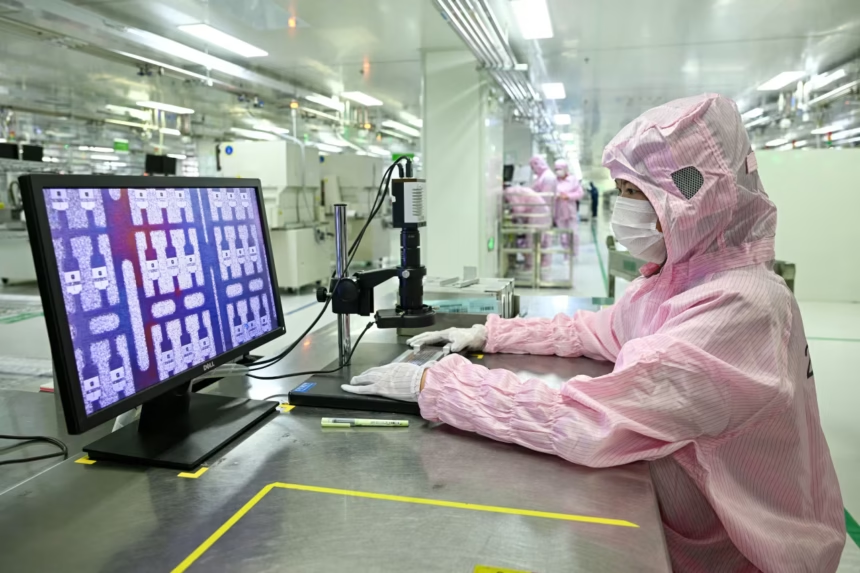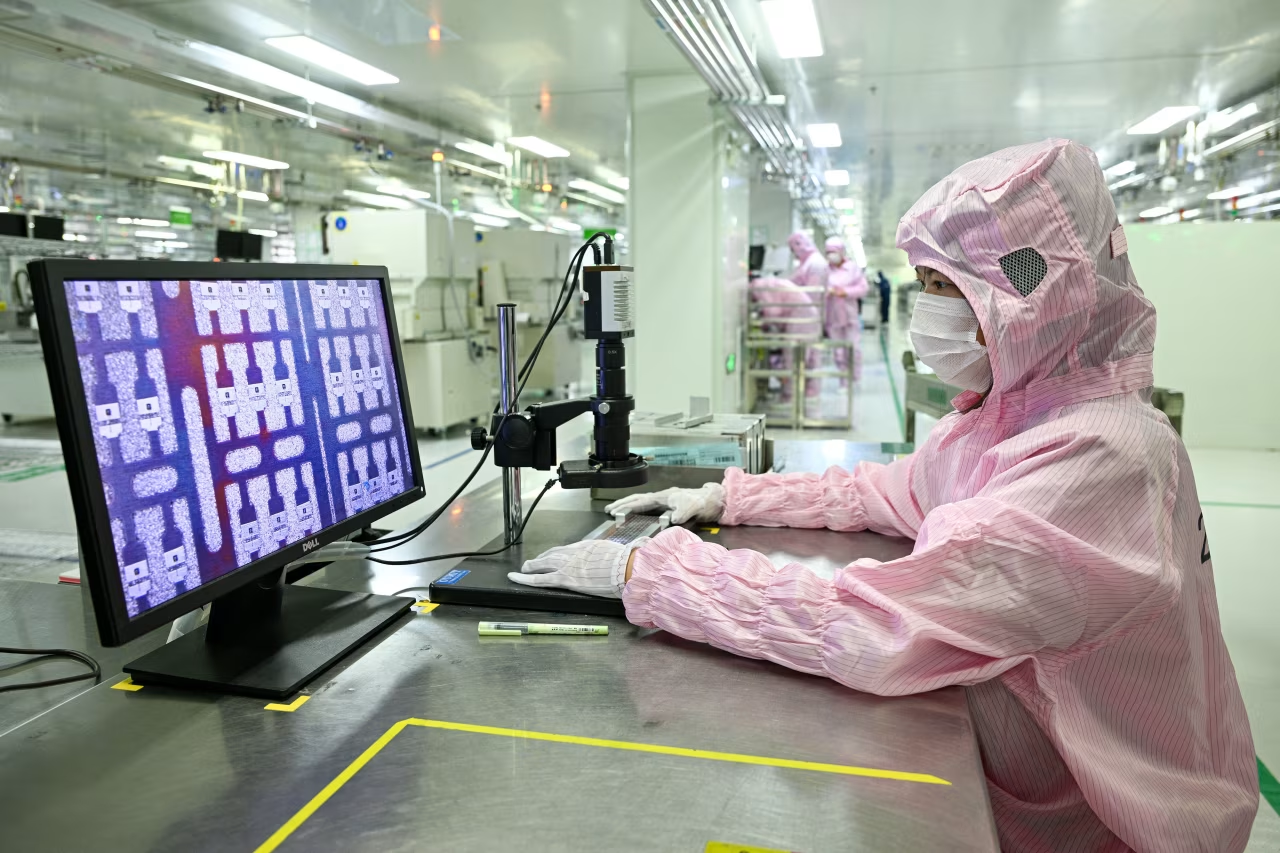BEIJING – China has ordered hundreds of its engineers and technicians working in Indian electronics factories to return home, a step shaking up India’s rapidly growing electronics scene. This unofficial pullout could throw Apple’s production goals off course and slow India’s plan to challenge China’s hold on global manufacturing.
The India Cellular and Electronics Association (ICEA), which counts Apple, Foxconn, Google, and Tata Electronics among its members, wrote to the government calling China’s move “a targeted effort to disrupt India’s supply chains and slow its emergence as a global hub”.
The directive, which reportedly began taking effect two months ago, has led over 300 engineers and technicians to leave Foxconn’s iPhone plants in southern India.
These workers, essential to setting up production lines and passing on technical skills, left suddenly and without an official reason.
Taiwanese staff have tried to take over their roles, but the timing puts extra pressure on Apple as it prepares to start assembling the iPhone 17. Apple sees India as a key part of moving its supply chain out of China as geopolitical tensions grow.
Setback for India’s Manufacturing Growth
India now makes about a fifth of the world’s iPhones, no small feat given that large-scale assembly started just four years ago. In the last financial year, Apple exported $22 billion worth of iPhones from India, a 60 percent increase from the year before.
The goal is to produce 60 million phones this year and make most US-bound iPhones in India by late 2026. Foxconn, Apple’s biggest contract manufacturer, leads this push with 80,000 Indian workers and hefty investments in a new plant near Bengaluru.
Losing Chinese technical staff threatens this rapid progress. These engineers bring decades of knowledge honed in China. Their understanding of the machines, most of which come from China, is tough to replace quickly. The ICEA highlighted in its warning that the absence of these experts causes long delays and increased costs, putting India’s projected $32 billion in smartphone exports next year at risk.
An ICEA industry source summed up the mood: “China’s actions are clearly meant to hold back India’s electronics industry. By recalling engineers and slowing equipment exports, China is attacking the heart of India’s manufacturing ambitions.”
 Strained Ties and the Battle for Supply Chains
Strained Ties and the Battle for Supply Chains
This pullback fits into a pattern of Beijing trying to keep its lead in manufacturing. Over the past year, China has tightened controls on vital materials, including rare earth magnets and pharmaceutical ingredients. Some see these as tactics to keep its upper hand in key sectors.
Earlier this year, reports emerged of Chinese officials urging less transfer of technology and technical workers to India and Southeast Asia, a direct answer to the worldwide push to shift production out of China.
These developments reflect a backdrop of worsening relations between India and China, stoked by border tensions and India’s limits on business visas for Chinese nationals. Some suggest China’s move is payback for those visa curbs, which have made it harder for Chinese company staff to work in India.
Kyle Chan, an expert at Princeton University, says China wants to show firms like Apple just how much it still controls the supply of expert labour and machinery.
Apple faces a real challenge. Chief executive Tim Cook has talked often about the “irreplaceable” skill of China’s manufacturing workforce, saying no other country can match China’s deep pool of trained engineers.
While India is catching up, it doesn’t yet have the same size or depth of talent. The rapid exit of Chinese personnel could slow workforce training and factory efficiency. Foxconn tries to plug the gap with Taiwanese and Vietnamese staff and by updating machines for English-speaking users, but these are only short-term fixes.
India’s Options Moving Forward
The Indian government is watching production at sites like Foxconn closely. So far, officials say phone production continues as planned, but they admit the long-term risks are real. “The government got visas for Chinese experts, but now companies must keep output stable,” said a source near the situation. The ICEA is pressing for fast action to tackle China’s hidden restrictions, warning that $24 billion in export output for this year could be lost.
India’s broad goal of becoming a top manufacturing centre rests in part on its $23 billion Production-Linked Incentive (PLI) scheme. This policy helped attract multinationals like Apple and Asus and drove up exports of phones and medicines. Still, progress in other sectors remains patchy. With engineer departures and slow equipment shipments, investors may start to worry about India’s ability to deliver consistent results.
Analysts still see hope for India’s recovery. The “Make in India” push and the new Semiconductor Mission aim to train more local talent. But matching China’s decades of know-how will take time. Hommer Zhao, an expert in electronics production, says India has a solid base, but replacing the skills of seasoned Chinese engineers will not happen overnight.
Apple Faces Global Pressure
Apple is caught between powerful interests. Its “China+1” approach, prompted by US tariffs and supply risks, hinges on India. But China’s recent actions show how hard it is to untangle supply chains from a country responsible for most of the world’s iPhones, especially in Foxconn’s huge Zhengzhou facility. The idea of shifting all production to the United States, pushed by President Trump, is seen as too expensive and unrealistic. Apple’s India plan is a middle path.
Still, China’s ability to pull staff and limit equipment shows its clout. As one Apple watcher put it online, “China doesn’t want India doing to China what China did to the US.” Even if these steps don’t halt production, they could put Apple’s schedule at risk and test trust in India as a real rival to China’s manufacturing strength.
India faces a clear challenge: how it responds now will help decide its place in global industry. Reports suggest the government is working on a detailed strategy to manage the situation before it gets worse. Industry leaders are calling for more training and better equipment sourcing to help reduce India’s reliance on China for technology and staff.
For now, both Apple and Foxconn have stayed quiet about the departures. But this silence hints at the delicate negotiations happening behind the scenes. India’s manufacturing goals, Apple’s need for steady production outside China, and Beijing’s tactical moves are coming together in a major test. As one factory insider put it, “This goes beyond a few engineers—it’s about who shapes the future of making things.”
Related News:
China and India Face Off Over Dalai Lama’s Successor Amid 90th Birthday Celebrations





 Strained Ties and the Battle for Supply Chains
Strained Ties and the Battle for Supply Chains








